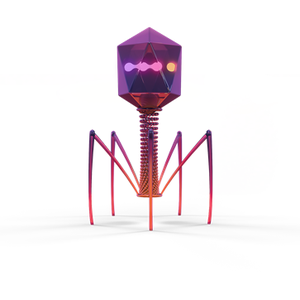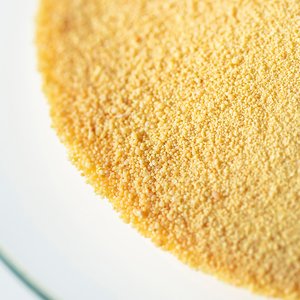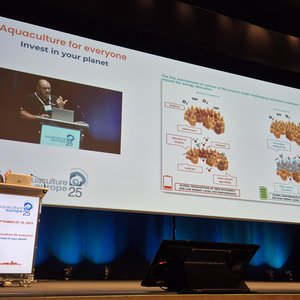Would you eat white-colored salmon? Probably not. We are drawn to salmon that have a characteristic pink color, as we associate this with natural, health, taste and flavor. For fish farmers, the pink color represents premium product quality and a good price. In the wild, salmon and crustaceans obtain their pink color by consuming a range of different ingredients that contain pigments. They cannot synthesize the pigment by themselves. Astaxanthin (AX) is one of the main pigments and is naturally produced by red yeast Phaffia rhodozyma. You can imagine that when you start producing salmon and crustaceans on fish farms, access to this red yeast - and pigment - is lost. If we want to produce pink-colored salmon in farming conditions, diets need to be supplemented. There is a natural way to supply AX to farmed fish and crustaceans, and this delivers some extra benefits for animal health as well.
Consumer-driven demands
The production of natural AX has gained renewed interest because most of the AX used is industrially synthesized using unsustainable petrochemical processes. The global market is dominated by synthetic AX due to its lower production cost.
Dr. Carlos Luna Flores is a researcher and Advance Queensland Industry Fellow at the Queensland University of Technology (QUT) in Australia and a research and development scientist with feed additives company Bioproton. He sees a shift in producing more naturally produced AX. “Synthetic AX is composed by a racemic mixture of AX stereoisomers in which some of them do not exist in nature,” he said. “At the same time, consumers demand natural and organic products, regulations forcing companies to have environmentally friendly production processes, and the imminent threat of lack of supply of oil-dependent AX have renewed interest for natural AX production.”
And the first steps towards natural AX are made. An increasing number of salmon farmers globally are moving towards using naturally derived AX. The main driver here was the trends and demand by the consumers which prefer safe and organic products to synthetic-derived products.
AX: Antioxidant and immune booster
AX is naturally produced by red yeast Phaffia rhodozyma, a type of yeast that Dr. Luna Flores has been studying for years. Together with Bioproton, he looked at ways to make the production process of naturally produced AX from red yeast more cost-effective and efficient. At the same time, yeast is known for many health and immune-promoting effects, which sparked Dr. Luna Flores and his team to study what other beneficial properties the red yeast could bring for fish diets.
“AX is fed to all farmed salmonids and crustaceans mainly for pigmentation purposes,” he said. “However, we have learned that AX from red yeast also has potent antioxidant and immune-stimulating properties. The antioxidant properties protect the animal against reactive oxygen species which can cause damage to the cell membrane, proteins, or DNA which can lead to serious health issues. The immune-boosting effects are coming from the yeast cell wall that contains biologically active carbohydrates which can stimulate the immune response of the animal. Our red yeast cell wall components, in synergy with AX, not only provide astaxanthin for pigmentation purposes but also improve the immune response of the animal, a property not found in any other sources of AX. And this opens up new applications of AX as a health-promoting natural feed additive.”
Boosting natural AX production
Having a natural alternative of AX is great, but it also has to be price competitive against the current AX used. The red yeast P. rhodozyma is preferred over other AX producing microorganisms due to its higher growth rate, productivities and robustness amongst others. However, the production of AX in wild-type red yeast strains does not meet the commercial metrics.
To overcome this problem, Dr. Luna Flores and his team, in cooperation with Bioproton, applied classical random mutagenesis to boost industrial production of AX using the red yeast. Dr. Luna Flores explained, “with the use of random mutagenesis and different screening methods, we obtained a strain and bioprocess capable of producing AX at levels 50-fold more than the wild-type. This increase of production improves the competitiveness against the synthetic AX and can compete in current markets”.
Bioproton currently produces this naturally AX and plans to expand fermentation capability in the future. “The Bioproton product is very diverse and it is not only used for pigmentation purposes in fish but also as a potent antioxidant and immune stimulant product for all farmed animals,” Dr. Luna Flores said. “The AX market in fish farming is a multimillion-dollar business and regulations are moving to solely use natural AX. At the same time, the curb on preventive antimicrobial growth promoters in livestock feed in more regions around the world is pushing the market towards more naturally based feed additives that have strong health and immune-stimulating effects. This is where this product can make a difference.”













